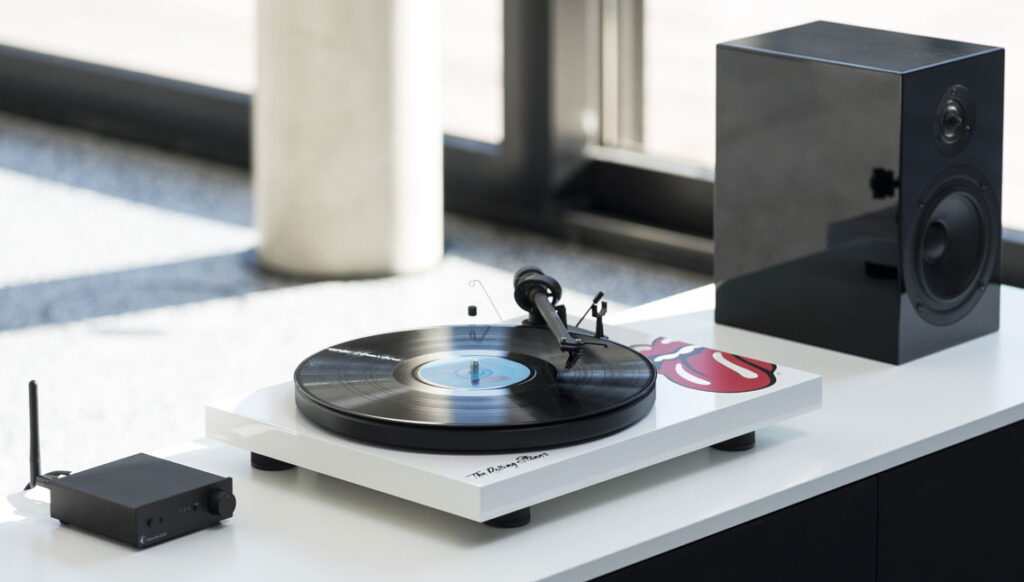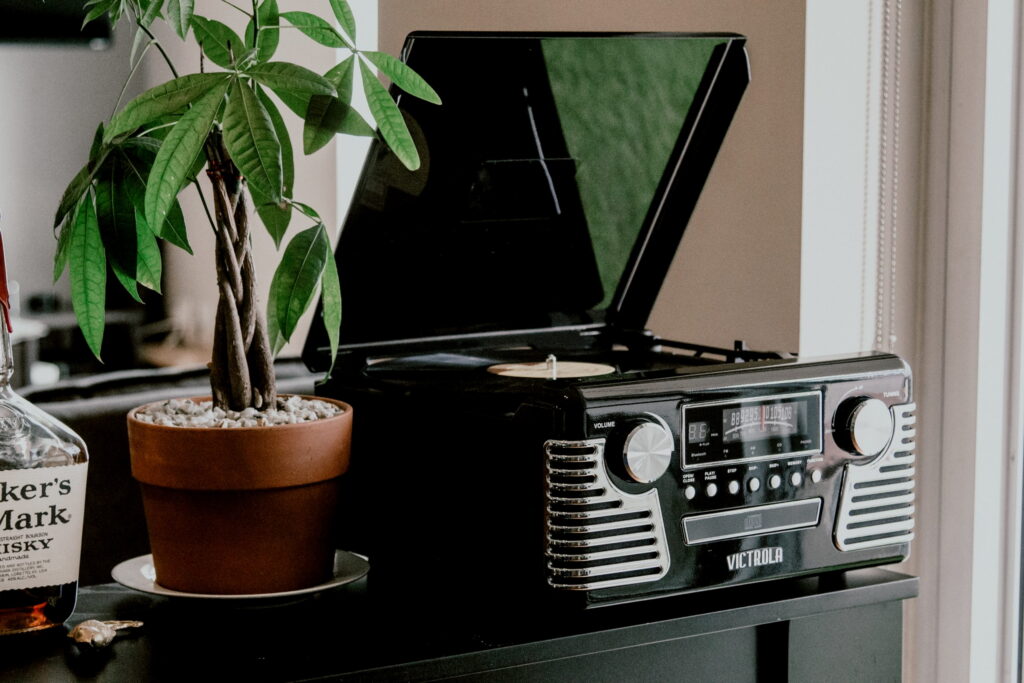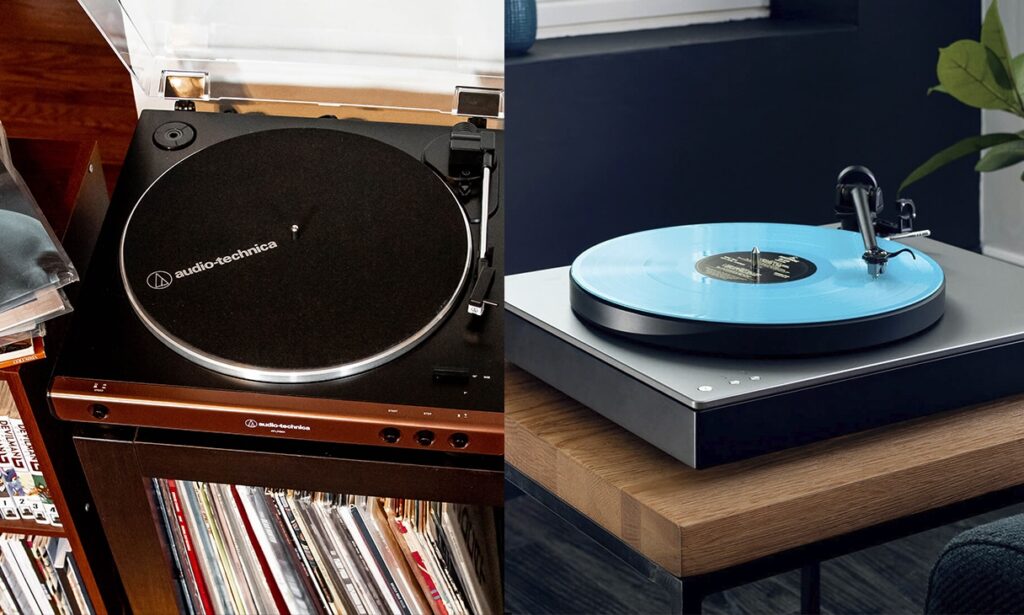The return of the vinyl record and its popularity is often referred to as the “vinyl revival”. But, the vinyl revival is about a lot more than purchasing a record player. Maintaining the components that make up your record payer is key to ensuring that your records can be played properly and not damaged.
This includes knowing how to replace a needle on a record player. The needle, or stylus as it’s more commonly called these days, is an important component of the record player since it’s the only item that makes direct contact with the record. By moving along the grooves of the record’s vinyl surface, the needle reads the music.
Whether you’re just a nostalgic music lover Trusted Source Music and health - Harvard Health Researchers are exploring the many ways in which music may influence health, from stress relief to athletic performance. www.health.harvard.edu or a hip DJ with a love of vinyl, everyone can agree, maintaining your record player needle is important if you want to continue enjoying the music. Let’s have a look at all the factors you need to be aware of when it comes to replacing the needle on your record player.

If you haven’t been keeping track of the number of hours you’ve been using the stylus, the next best way to tell if it needs changing will be by listening to the sound. Simply listen to a record that you know to be in perfect working order. A clear and audible hiss or static sound is a clear indication that the needle may be faulty and need replacing.
If you’ve purchased a second-hand record player, it’s a good idea to change the needle. You’ll most likely not know the age of the existing needle, how it has been used and whether or not it’s damaged. Changing the needle and the cartridge will prevent damage to your records. It’ll also be easier for you to keep track of the new needle’s usage.
You might be thinking it’s time to upgrade your turntable stylus. One of the more common options is the Audio-Technica ATN95E Replacement Stylus. Vinyl enthusiasts will adore the sonic accuracy of this nifty little replacement stylus. An elliptical diamond delivers fantastic tracking accuracy. Your favorite tunes will sound better than ever!

The needle, or stylus, is inserted into the tonearm grooves. This is done once the back of the cartridge is inserted by locating the needle at a slightly downward angle. When the back is installed, simply lift the front and snap the needle and cartridge into place.
To ensure that you get the right part for your record player, you should have a part number or serial number. The more information you have regarding the desired part, the easier it’ll be to find it. The last thing you want is to spend money ordering the wrong part.
Not all record players use the same type of stylus. If you’re planning an upgrade, it’s important to make sure that the new stylus you’re considering is compatible with your record player. There are four common stylus types that you can use on your record player. Let’s look at each type in a little more detail.
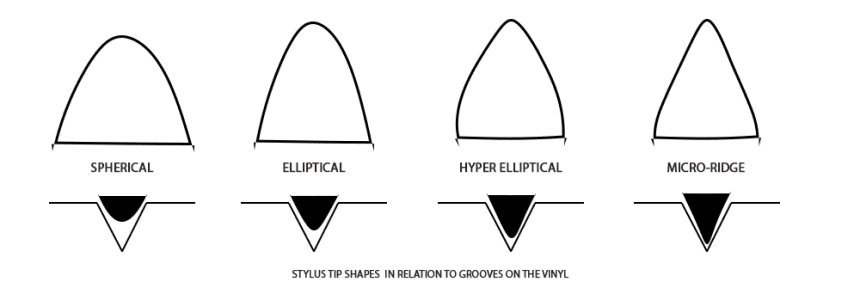 Spherical
SphericalA spherical stylus is generally the most common type also the least expensive. Up close it looks almost like the tip of a pen. This type of stylus also has quite a large radius and as a result, the contact area of the diamond tip is restricted to only two points, which some record lovers claim produces less wear on the actual vinyl.
The next type of stylus is known as an elliptical or bi-radial. Since this version makes contact across a much larger area of the vinyl’s groove wall, there’s more room for improved frequency response. This means lower distortion and improved phase response. This stylus will wear faster than a spherical one. A tip to note if you’re considering an upgrade to this unit is to keep your eye on the alignment of the tonearm if you want the best listening results.
A few other names for the Hyperelliptical stylus are shibata, sterehedron, or fine line. It’s the next step in the elliptical evolution. With a sharper design, the stylus makes greater contact with each record groove.
When it’s aligned properly, this particular stylus will offer exceptional frequency performance, improved tracking, and promises a longer tip life. There’s also a reduction in record wear, meaning you can listen to your favorites as many times as you want without any damage. The advanced design makes them more expensive than the standard elliptical stylus.
The most advanced of all the stylus types is the micro-ridge or microline stylus as it’s sometimes referred to. This tip is computer designed and comes very close to the shape of the cutting stylus that’s used to manufacture master discs.
The multilevel ridge shape means the stylus can produce and most consistent high-frequency performance. If aligned properly, it also offers a much longer record and stylus durability. Since they’re so difficult to manufacture, they’re relatively expensive.
Quality record players and their components are very delicate. Changing the stylus and the cartridge is a delicate process and should be done with the utmost care. To change your cartridge you’ll need a flat-head screwdriver, stylus gauge as well as an alignment tool. Here are the brief descriptions of these tools.
Once you have the right tools on hand, our simple step by step guide will assist you with replacing the needle and the cartridge. I’ve listed the two processes separately to avoid any confusion. Follow the step appropriate to what you need to do: changing either the needle or the cartridge or both.
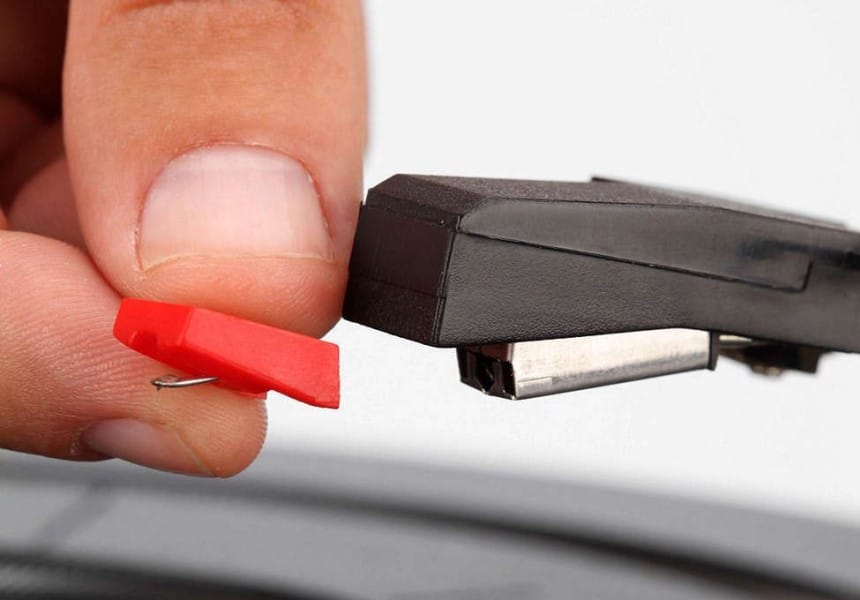
From one music lover to another, here’s a tip for ensuring your needle doesn’t get damaged. Use thin rubber gloves when you replace the stylus. Avoid touching the needle since it’s already perfectly aligned when it comes out of the box. Touching it may impair the needle’s ability to track the grooves in your record. This will give you a static sound from the onset and that’s not what you want. Handling the new stylus as gently as possible is key to ensuring the process runs smoothly!
Step by step cartridge replacement process
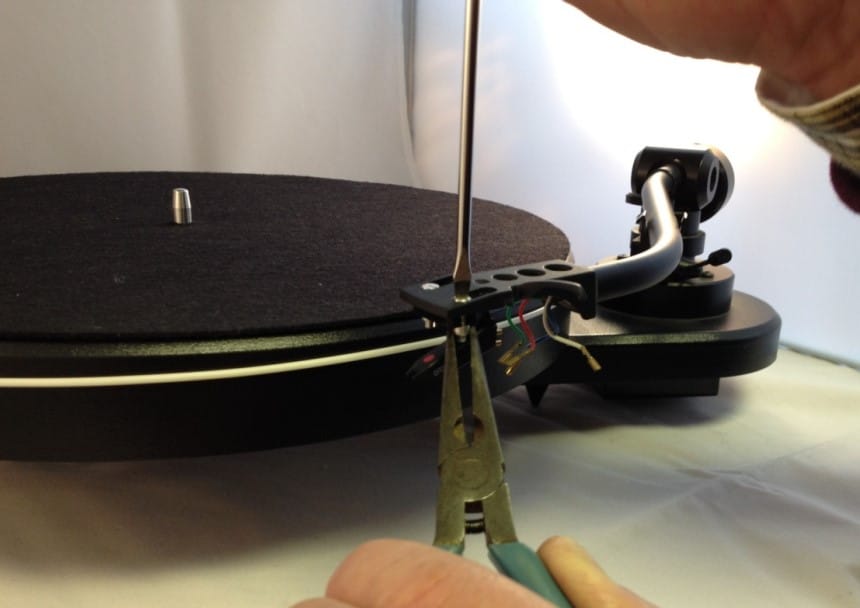
Follow the steps we’ve listed below:
When it’s time to replace your cartridge, you might consider opting for a universal fit such as the Ortofon 2M. Not only is the Ortofon a multipurpose cartridge that provides clear, dynamic sound, it also features an impressive Elliptical diamond. Opting for a universal component will save you the hassle of searching for available stock. Do your research beforehand so that you can consider all your options.
As you’ve seen from this article, replacing the needle on your record player is very easy if you follow the steps as I’ve laid them out. As long as the stylus you’re using is compatible with your record player and fits securely into the cartridge, you’ll have no problem changing the needle yourself. Ensuring you use the right tools, and working as gently as possible are also crucial to the process.
Once you learn how to replace a needle on a record player, you’ll be able to enjoy hours of listening to your favorite records. You won’t need to stress over any damage to your old and treasured vinyls!


